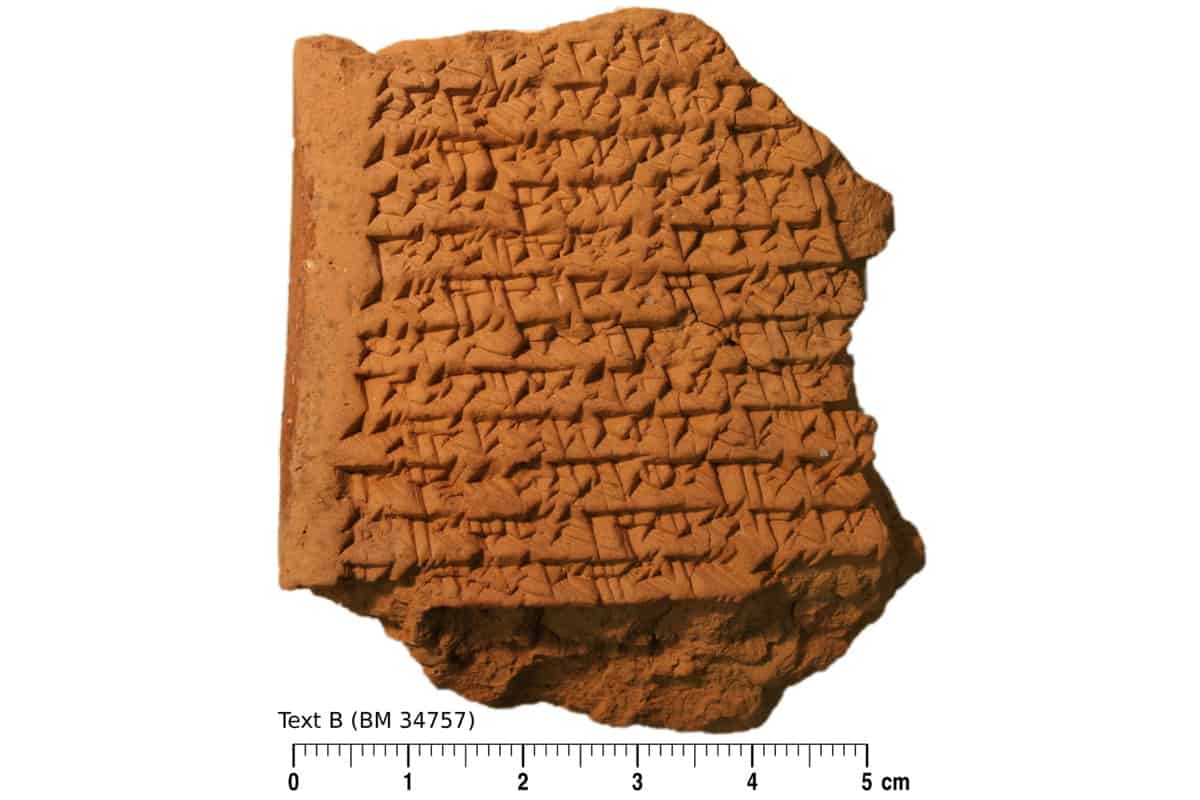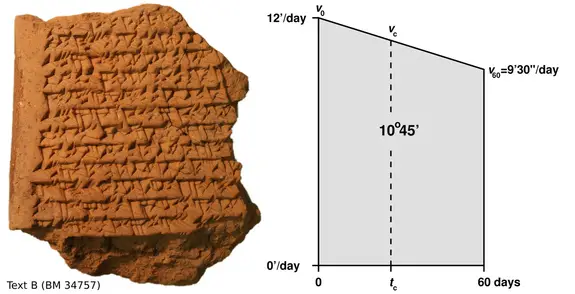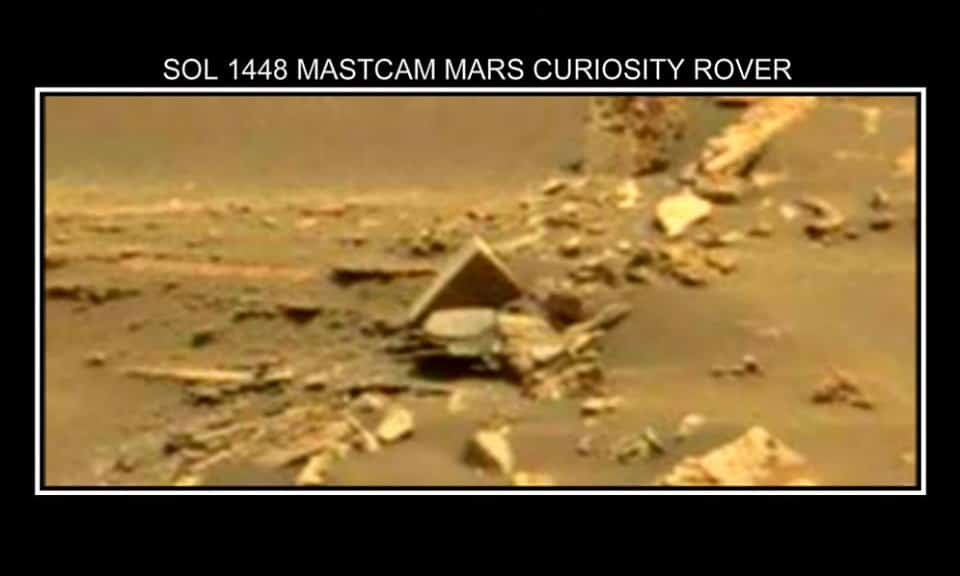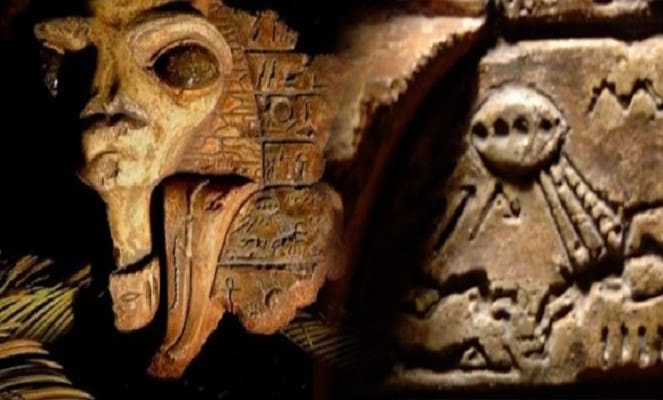
Not only does this discovery change everything we thought we knew about Astronomy in ancient times, but the ancient tablets describe math that was believed to have been invented over 1,000 years later, drastically changing everything we know about ancient man, and rewriting history books along the way.

For the past couple of decades, it was believed that ancient Babylonian astronomers used arithmetic systems for predicting the positions of celestial bodies. But a new study published in the journal Science presents the first evidence that ancient Babylonian astronomers were using geometry much sooner than previously thought. New studies indicated that ancient astronomers used small boards which demonstrate the use of sophisticated geometric methods to calculate the position of planets like Jupiter by a trapezoidal area several centuries ahead to the development of calculation.
The discovery, made by science historian Mathieu Ossendrijver at the Humboldt University in Berlin provides new details on ancient Babylonian astronomers and their staggering precision when it comes to astronomy. Ossendrijver managed to translate and interpret five ancient clay tablets which were marked with tick-shaped imprints of the ancient cuneiform script. Reports indicate the tables were excavated in the late nineteenth century and are currently kept at the British museum in London, UK.
“This is familiar to any student of physics, or math or science,” Mathieu Ossendrijver, an Astro-archaeologist at the Humboldt University of Berlin, told Space.com. But using time as a variable to calculate speed or distance has not been part of human culture forever. Using a graph to understand motion or speed over time is usually traced back to scholars in Oxford and Paris around 1350, and then to Isaac Newton, who developed integral calculus, Ossendrijver said. “What I now found is that this method was already invented in Babylonia more than 1,500 years earlier.”
Prior to studying the history of science and cuneiform in 2005, Ossendrijver was an astrophysicist who in 2012, published a book of new translations for the known Babylonian tables featuring astronomical calculations and tables.
“Although it is known that the geometry was used from around 800 BC, we did not know that it was used to calculate the position of the planets, “says Ossendrijver.
The researcher has spent the last 14 years examining the Babylonian cuneiform tablets kept in the British Museum. No one had ever found a Babylonian astronomical calculation that leveraged their impressive knowledge of pure geometry until Ossendrijver did it, who described it as “small bunch of four weird trapezoid computations” between 2,000 and 2,400 years old, writes National Geographic.

According to Niek Veldhuis, from the University of California, Berkley — a researcher who wasn’t involved in the study —The study also fills in crucial gaps, since it “finally connects Babylonian mathematical astronomy with geometrical mathematics”—a missing link that has eluded scholars for more than a century.
“That such an important, and almost completely preserved, an example can now be added to the corpus…speaks volumes about the untold treasures that may still be found in the drawers of the British Museum and other such collections,” says Veldhuis.
Incredibly, Ancient Babylonian techniques outshine methods used by contemporary Greek and Egyptian Astronomers, and incredibly, mirror the mean speed theorem, which is a mathematical description of motion, invented by a 14-th century English group known as the Oxford Calculators.
“There are thousands of tablets in various museums that were never translated,” says Ossendrijver, “and often we can translate a tablet but don’t understand what is going on until much later.”
Ossendrijver concluded that the trapezoidal calculations were a tool to determine the movement that traces Jupiter on a daily basis. The calculations present in the tablet record a period of 60 days, which began on the first night when the Gas Giant was observable in the sky after nightfall and shows that ancient Babylonian astronomers knew how to calculate the area under a curve in order to determine a numerical value. This indicates, says Ossendrijver in the journal Science, the ancient Babylonian astronomers had developed abstract mathematical concepts that relate to the movement, position and time, fundamental aspects that are used by any modern-day mathematician or physicist.
Regrettably, when the ancient Babylonian culture declined together with the cuneiform script it was recorded in around the year 100, these ancient (advanced) techniques were forgotten according to Ossendrijver, and appeared again in the 14th century when researchers began using graphs to calculate changes to a system over time. However, not everything vanished with the decline of ancient Babylonian culture. For instance, people today still discuss the signs of the Zodiac, use the Ancient Babylonian system of degrees, minutes and seconds in units of 60 in order to calculate distances across the sky.
Ossendrijver said that ancient Babylonian observations and techniques, translated into Greek, offer evidence of that transfer of information.
Alexander Jones, a historian at New York University wrote in the article accompanying the work of Ossendrijver that the process shows “a more abstract and profound conception of a geometrical object in which one dimension represents time. It’s much earlier than these concepts have ever been found before, he said, and “their presence … testifies to the revolutionary brilliance of the unknown Mesopotamian scholars who constructed Babylonian mathematical astronomy.”





